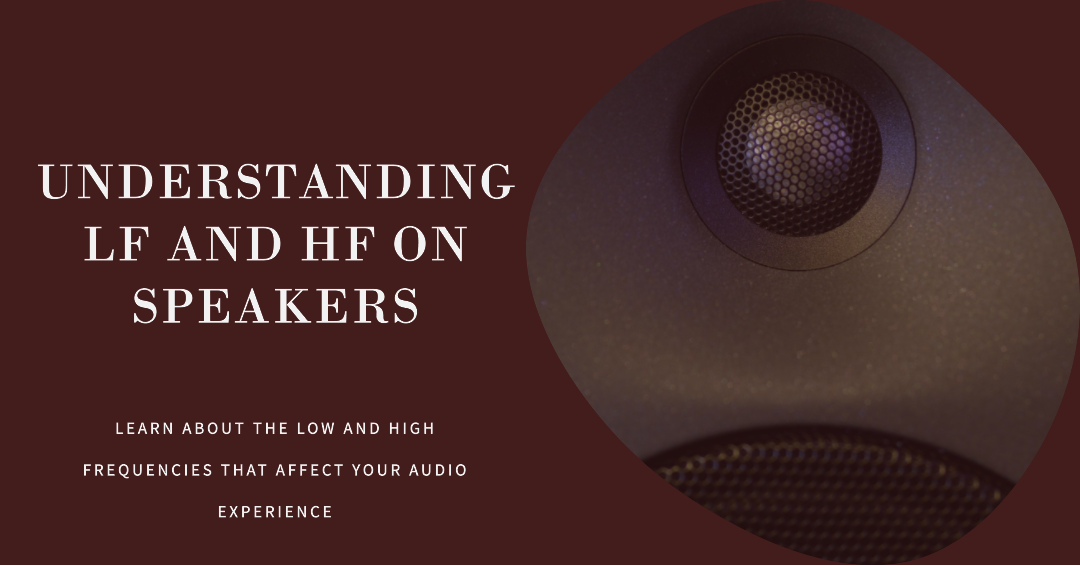For music enthusiasts, audio engineers, and anyone intrigued by how sound works, you've probably wondered: What does lf and hf mean on speakers? Understanding the intricacies of these terms can unlock a deeper appreciation for audio technology and the art of sound production. This comprehensive guide will walk you through the fundamental concepts of lf (low frequency) and hf (high frequency) on speakers. By the end, you'll be well-versed in how these two frequencies contribute to the overall sound experience.
What Does lf and hf Mean On Speakers?
To begin our exploration, let's first understand what these terms mean. In the world of sound engineering, lf denotes low frequency, while hf represents high frequency. These terminologies reflect the sound waves' frequencies produced by speakers. These sound frequencies play a significant role in determining the quality of the sound we hear. Let's dig deeper into these definitions to explore their implications on a speaker's performance.

Understanding Sound Frequencies: The Basics
Before delving into lf and hf, it's essential to have a basic understanding of sound frequencies. They are measured in Hertz (Hz), with the human ear typically capable of hearing frequencies ranging from 20Hz to 20,000Hz. These frequencies define the pitch of the sound, with lower frequencies resulting in bass sounds and higher frequencies leading to treble or high-pitched sounds.
Low Frequencies (lf)
Low frequencies typically range from 20Hz to 250Hz. These frequencies correspond to the bass sounds we hear in music or other audio sources. These sounds are produced by the woofer component of a speaker, designed to handle these lower frequency sounds.
High Frequencies (hf)
High frequencies, on the other hand, usually span from 2,000Hz to 20,000Hz, representing the treble or high-pitched sounds in music. These sounds are produced by the tweeter component of a speaker, engineered to handle higher frequency sounds.

The Impact of lf and hf On Speakers
Now that we have a basic understanding of lf and hf, let's examine how these frequencies impact a speaker's performance and, by extension, our listening experience.
Role of lf in Speaker Performance
Low frequencies are responsible for the deep, booming sounds we associate with bass. When these frequencies are well-balanced, they provide a richness and depth to the sound, enhancing the overall audio experience.
Role of hf in Speaker Performance
High frequencies contribute to the sharp, clear sounds that define a sound's clarity and detail. When appropriately handled, high frequencies provide the audio its texture, adding layers to the sound and making it more enjoyable and immersive.
Balancing lf and hf: The Art of Sound Engineering
Balancing low and high frequencies is an essential aspect of sound engineering. Proper balance can create an audio experience that is both immersive and enjoyable, while a poor balance can lead to sound that is either too bass-heavy or too sharp. Let's see how this balancing act is achieved.
Role of Crossover in Balancing lf and hf
A crossover is a crucial component in a speaker that helps manage and distribute frequencies appropriately. This device divides the audio signal into separate frequency bands, sending low frequencies to the woofers and high frequencies to the tweeters.
Impact of Room Acoustics on lf and hf
Room acoustics can greatly affect the balance of lf and hf. Certain materials and room shapes can absorb or reflect different frequencies, which can drastically impact the sound's overall quality.
Equalization (EQ) and Its Role in Balancing lf and hf
Equalization is a process that allows adjustment of the balance between different frequency bands. By using an equalizer, one can manipulate lf and hf to achieve the desired sound output.

FAQs
How does lf and hf affect the sound quality of speakers? Lf and hf directly impact a speaker's sound quality. lf contributes to the richness and depth of sound, giving it the bass effect. In contrast, hf provides the clarity and sharpness, offering the treble effects. A perfect balance of these frequencies results in an immersive audio experience.
Why are low frequencies harder to control in speakers? Low frequencies are harder to control because they have longer wavelengths and can easily overlap or 'muddy' the sound. They also require more power to produce and are more likely to cause vibration and resonance in the speaker enclosure.
What is the role of a crossover in managing lf and hf? A crossover plays a vital role in managing lf and hf. It divides the audio signal into separate frequency bands, assigning low frequencies to woofers and high frequencies to tweeters. This division helps in maintaining a balanced sound output.
How can room acoustics impact the balance of lf and hf? Room acoustics can greatly affect the balance of lf and hf. The room's size, shape, and materials can either absorb or reflect different frequencies, thereby impacting the sound's quality and balance.
What's the importance of equalization in balancing lf and hf? Equalization is crucial in balancing lf and hf as it allows for the adjustment of different frequency bands. Through an equalizer, one can increase or decrease lf and hf to achieve the desired sound output.
What is the ideal balance of lf and hf for optimal speaker performance? The ideal balance of lf and hf for optimal speaker performance is subjective and depends on personal preference. However, a well-balanced sound generally has clear, sharp highs (hf) without being piercing and deep, rich lows (lf) without being muffled or overpowering.
Conclusion
Understanding what lf and hf mean on speakers can transform the way we perceive and appreciate sound. By exploring these terms, we can gain a deeper appreciation for the technology behind our favorite music, podcasts, or any other form of audio content. With this knowledge, you can now confidently engage in discussions about sound frequencies and speaker performance. Remember, the balance of low and high frequencies is the heart and soul of a good sound experience.

